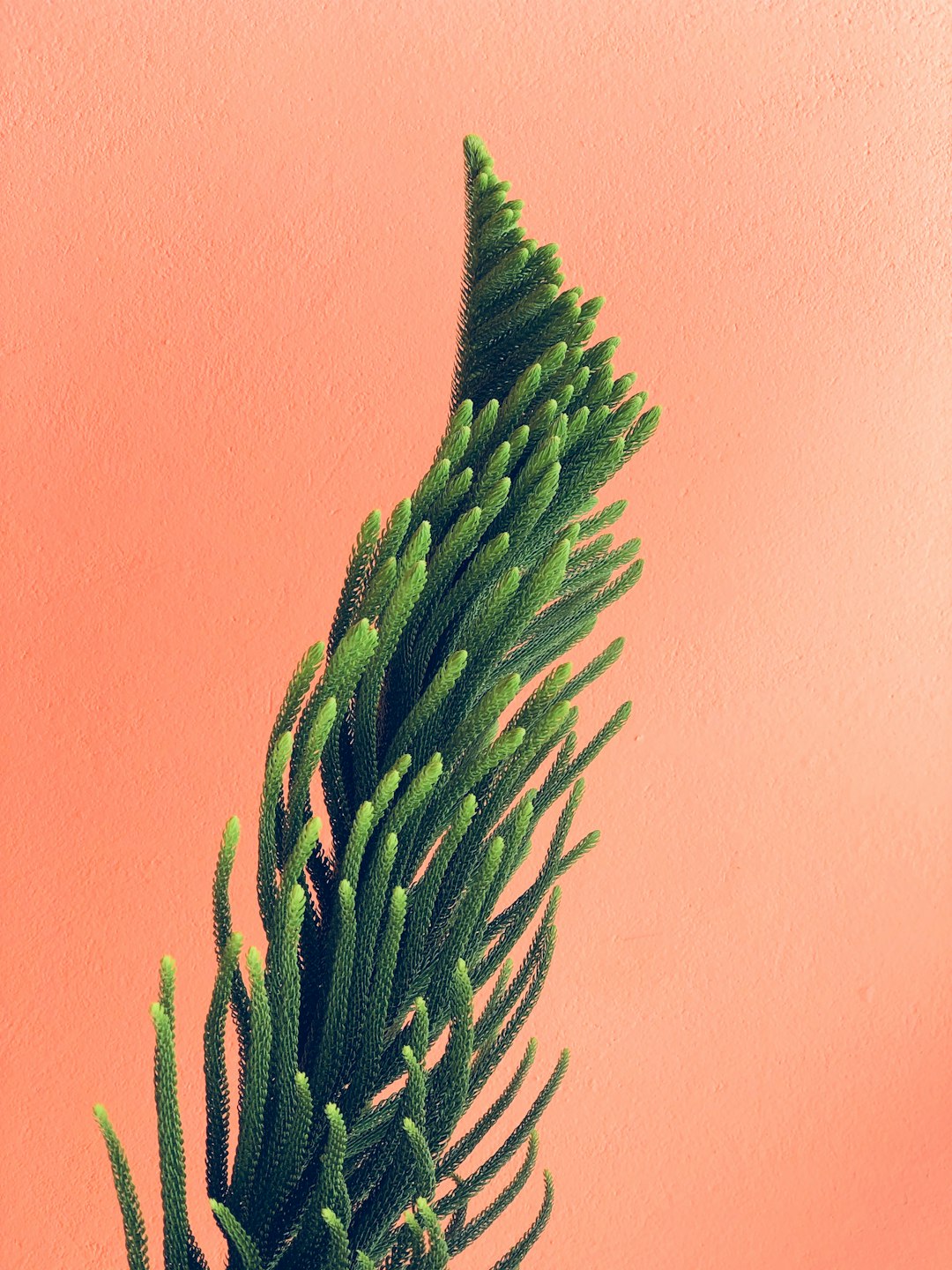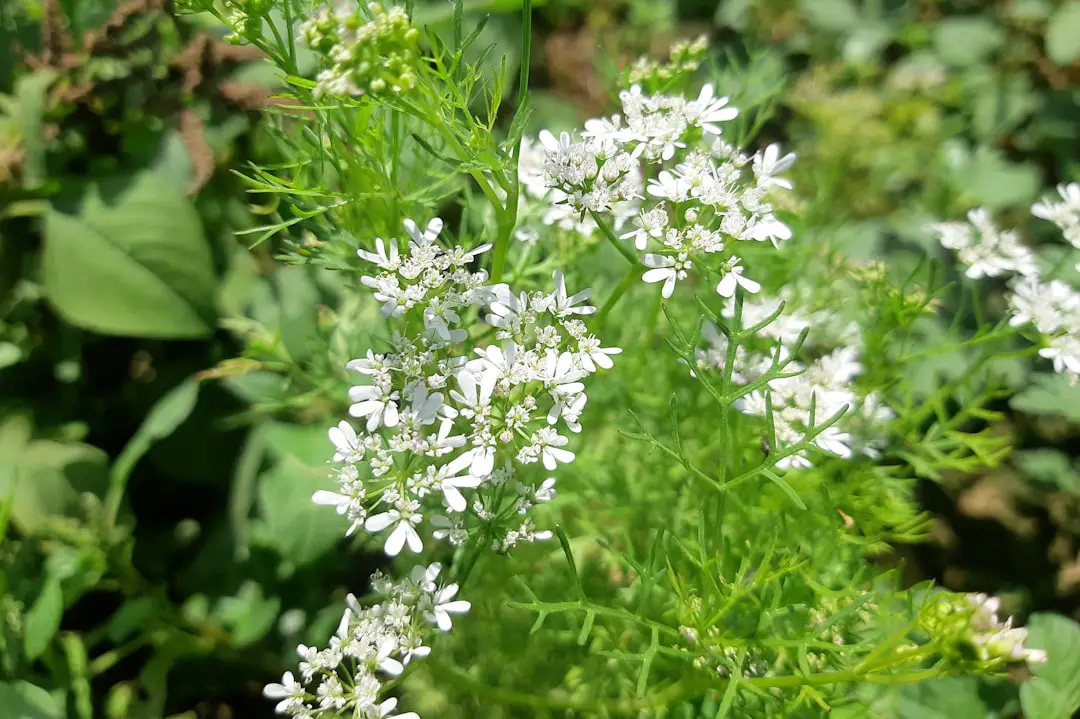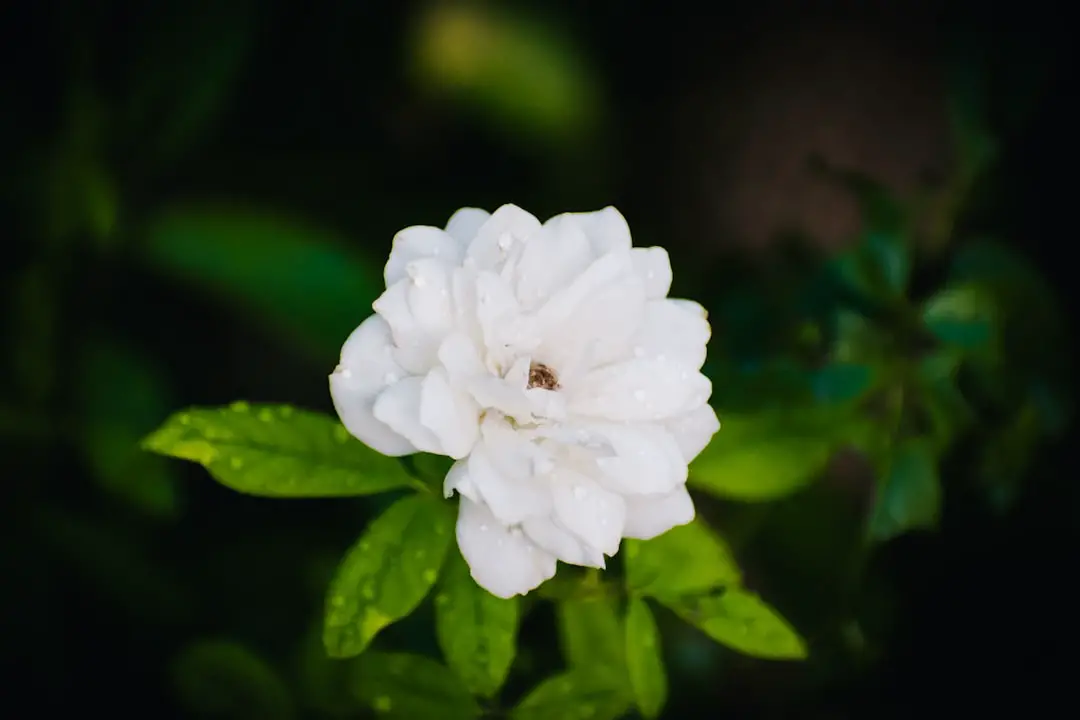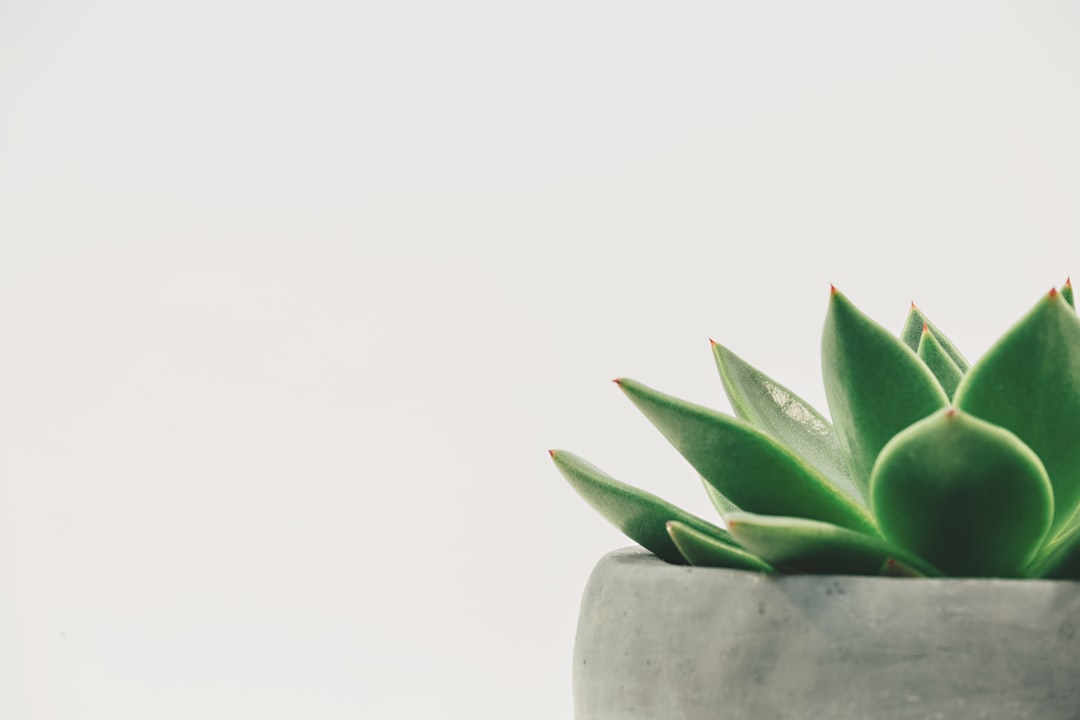Support our educational content for free when you purchase through links on our site. Learn more
Growing Teas from Seed [2024] 🌱

Discover the Secrets to Cultivating Your Own Tea Garden!
Have you ever dreamed of sipping a delicious cup of tea made from your very own homegrown leaves? Well, we’re here to tell you that it’s not just a dream—it’s completely achievable! In this comprehensive guide, we’ll show you everything you need to know about growing teas from seed. From selecting the right seeds to nurturing your plants, we’ve got you covered. So grab your gardening gloves and let’s get started on this tea-growing adventure together!
Table of Contents
- Quick Answer
- Quick Tips and Facts
- Background: The Art of Tea Cultivation
- Choosing the Right Tea Seeds
- Preparing the Soil
- Planting Your Tea Seeds
- Nurturing Your Tea Plants
- Harvesting and Processing Your Tea Leaves
- Common Tea Growing Challenges and Solutions
- FAQ
- Conclusion
- Recommended Links
- Reference Links
Quick Answer
Growing teas from seed is a rewarding and fulfilling experience that allows you to enjoy the freshest and most flavorful tea right from your own garden. With the right seeds, soil preparation, and care, you can cultivate a thriving tea garden that will provide you with an endless supply of aromatic leaves. So why wait? Start your tea-growing journey today and indulge in the pleasures of homegrown tea! 🍵
👉 CHECK PRICE on: Tea Seeds | Tea Plants | Tea Garden Tools
Quick Tips and Facts
✅ Tea plants (Camellia sinensis) can be grown from seeds or cuttings.
✅ Tea plants thrive in well-draining soil with a pH level between 6 and 7.5.
✅ Choose tea seeds that are fresh, viable, and suited to your climate.
✅ Start your tea seeds indoors 8-12 weeks before the last frost date.
✅ Transplant your tea seedlings outdoors after the danger of frost has passed.
✅ Tea plants require regular watering, but avoid overwatering to prevent root rot.
✅ Prune your tea plants regularly to promote bushier growth and higher leaf yield.
✅ Harvest tea leaves when they are young and tender for the best flavor.
✅ Process your tea leaves by withering, rolling, oxidizing, and drying.
Background: The Art of Tea Cultivation

Tea cultivation is an ancient art that dates back thousands of years. From the lush tea gardens of China to the sprawling plantations of India, tea has been grown and enjoyed by people all over the world. But why settle for store-bought tea when you can grow your own? By cultivating your own tea plants, you have complete control over the quality and flavor of your tea. Plus, there’s something incredibly satisfying about sipping a cup of tea that you’ve nurtured from seed to cup. So let’s dive into the world of tea cultivation and discover the secrets to growing teas from seed!
Choosing the Right Tea Seeds
The first step in growing teas from seed is selecting the right seeds for your garden. There are several varieties of tea plants to choose from, each with its own unique flavor profile. Here are some popular tea varieties to consider:
-
Camellia sinensis var. sinensis: This variety is known for its delicate and nuanced flavors. It’s commonly used to produce green, white, and oolong teas.
-
Camellia sinensis var. assamica: If you prefer a stronger and more robust tea, this variety is for you. It’s often used to make black teas.
When choosing tea seeds, look for fresh and viable seeds that are suited to your climate. It’s also a good idea to purchase seeds from reputable suppliers to ensure their quality. Once you have your seeds, it’s time to prepare the soil for planting!
Preparing the Soil
Tea plants thrive in well-draining soil with a pH level between 6 and 7.5. Before planting your tea seeds, it’s important to prepare the soil to create the optimal growing conditions for your plants. Here’s how to do it:
-
Choose a sunny location: Tea plants love sunlight, so select a spot in your garden that receives at least 4-6 hours of direct sunlight per day.
-
Clear the area: Remove any weeds, rocks, or debris from the planting area to create a clean and fertile space for your tea plants.
-
Improve drainage: If your soil is heavy or clay-like, amend it with organic matter such as compost or well-rotted manure to improve drainage.
-
Test the pH: Use a soil testing kit to determine the pH level of your soil. If it’s too acidic, add lime to raise the pH. If it’s too alkaline, add sulfur to lower the pH.
By preparing the soil properly, you’ll provide your tea plants with the ideal environment for healthy growth and abundant leaf production.
Planting Your Tea Seeds
Now that your soil is ready, it’s time to plant your tea seeds. Follow these steps to ensure successful germination and healthy seedlings:
-
Start indoors: Tea seeds can be started indoors 8-12 weeks before the last frost date in your area. Fill seed trays or pots with a well-draining seed starting mix.
-
Sow the seeds: Plant the tea seeds about 1/4 inch deep in the soil and cover them lightly with the seed starting mix. Water gently to moisten the soil.
-
Provide warmth and moisture: Place the seed trays or pots in a warm location with temperatures around 70-75°F (21-24°C). Keep the soil consistently moist but not waterlogged.
-
Transplant outdoors: Once the danger of frost has passed and the seedlings have developed a few sets of true leaves, they are ready to be transplanted outdoors. Choose a location with well-draining soil and plenty of sunlight.
By starting your tea seeds indoors, you’ll give them a head start and increase their chances of survival. Now it’s time to nurture your tea plants and help them thrive!
Nurturing Your Tea Plants
Tea plants require regular care and attention to ensure healthy growth and abundant leaf production. Here are some tips for nurturing your tea plants:
-
Watering: Tea plants need regular watering, especially during dry spells. Aim to keep the soil consistently moist but not waterlogged. Avoid overwatering, as it can lead to root rot.
-
Fertilizing: Tea plants don’t require heavy fertilization, but a balanced organic fertilizer can help promote healthy growth. Apply a slow-release fertilizer in early spring and again in mid-summer.
-
Pruning: Prune your tea plants regularly to promote bushier growth and higher leaf yield. Remove any dead or diseased branches, and shape the plants to your desired form.
-
Protecting from pests and diseases: Tea plants can be susceptible to pests such as aphids and diseases such as powdery mildew. Monitor your plants regularly and take appropriate measures to control pests and diseases.
With proper care and attention, your tea plants will flourish and reward you with an abundance of fresh and flavorful leaves. But when is the right time to harvest your tea leaves? Let’s find out!
Harvesting and Processing Your Tea Leaves
The timing of tea leaf harvest is crucial to achieve the best flavor and aroma. Here’s how to harvest and process your tea leaves:
-
Harvesting: Tea leaves are best harvested when they are young and tender. Pluck the top two leaves and the bud from each stem. Avoid plucking the older and larger leaves, as they can have a bitter taste.
-
Withering: Spread the freshly harvested tea leaves in a single layer on a clean and dry surface. Allow them to wither for 12-24 hours to reduce moisture content.
-
Rolling: Gently roll the withered tea leaves between your palms or use a rolling pin to break down the cell walls and release the tea’s natural flavors and aromas.
-
Oxidizing: Depending on the type of tea you want to make, you can choose to oxidize the tea leaves or skip this step for green teas. Oxidation is the process that gives black and oolong teas their distinct flavors.
-
Drying: Finally, dry the tea leaves to remove any remaining moisture. You can air-dry them in a well-ventilated area or use a food dehydrator set to a low temperature.
Congratulations! You’ve successfully harvested and processed your own tea leaves. Now it’s time to sit back, relax, and enjoy a cup of tea that you’ve grown with love and care.
Common Tea Growing Challenges and Solutions
Growing tea plants can come with its fair share of challenges. Here are some common issues you may encounter and their solutions:
-
Pests: Aphids, caterpillars, and other pests can damage tea plants. Use organic pest control methods such as neem oil or insecticidal soap to keep them at bay.
-
Diseases: Powdery mildew and root rot are common diseases that can affect tea plants. Ensure proper air circulation, avoid overwatering, and remove any infected leaves or plants.
-
Extreme temperatures: Tea plants prefer moderate temperatures between 55°F and 85°F (13°C and 29°C). Protect your plants from extreme heat or cold by providing shade or using frost covers.
By being proactive and addressing these challenges, you can ensure the health and vitality of your tea plants.
FAQ

How long do tea plants take to grow from seed?
Tea plants typically take 3-5 years to reach maturity and start producing a significant amount of leaves. However, you can start harvesting small amounts of leaves after the first year.
Read more about “Where to Buy Camellia Sinensis Seeds …”
Do I need to soak tea seeds before planting?
Soaking tea seeds overnight before planting can help improve germination rates. However, it’s not necessary for all tea varieties. Consult the seed supplier or follow the specific instructions provided with your seeds.
Do tea plants need a trellis?
Tea plants can benefit from a trellis or support system, especially if you’re growing them as a hedge or to manage their shape. However, it’s not essential for their growth and can depend on the specific variety and your desired aesthetic.
Do tea plants need full sun?
Tea plants thrive in full sun, but they can tolerate partial shade. However, insufficient sunlight may affect their growth and leaf production.
If you have any more questions about growing teas from seed, feel free to reach out to us. We’re here to help you on your tea-growing journey!
Read more about “Tea Plant Growing Conditions …: How to Cultivate the Perfect Cup of Tea”
Conclusion

Growing teas from seed is a delightful and rewarding experience that allows you to savor the flavors of your own homegrown tea. By following our comprehensive guide, you’ll be well-equipped to cultivate a thriving tea garden and enjoy the pleasures of freshly brewed tea. So why wait? Start your tea-growing adventure today and embark on a journey of flavor, aroma, and self-sufficiency. Cheers to growing your own tea! 🌱🍵
Recommended Links
- Green Tea Cultivation
- Herbal Tea Planting
- Tea Plant Varieties
- Soil and Climate for Tea
- Tea Market Trends
- Growing Teas Indoors
Reference Links

